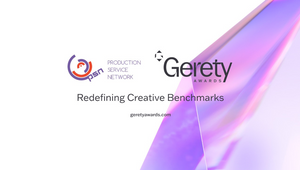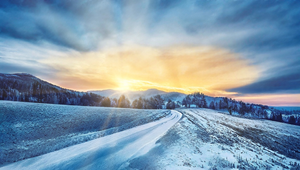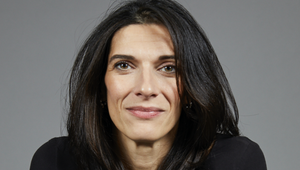
Hillary Rogers: “Being on Location Is Extremely Helpful When There Are a Lot of Beats You Need to Hit”

Production Service Network, the one-stop-shop for worldwide film & photo shoot support, is proud to support creativity across the planet. As part of that mission, we’ve teamed up with LBB to celebrate the past, present and future of the big creative idea. Over the course of this upcoming interview series, we’ll speak to producers who’ve breathed life into creativity and, quite simply, been the driving force that made incredible things happen.
Today we dive into the subject of production and on location shoots with Pulse’s Hillary Rogers, whose career spans decades and countless on location shoots. She tells us all about the creative necessity of locations and how they help to immerse actors in the right environment - fast - a must for the quick-paced nature of ad shoots. Hillary also offers her thoughts on virtual production, and how technology is bridging gaps and giving young and diverse talent more access to the industry.
LBB> How does shooting on location add value, perhaps authenticity, that a viewer can see when they watch a piece of work? How important is that to an advertiser's campaign?
Hillary> I think authenticity is one of the most important factors about shooting on location, in my experience as a producer, but also for the directors we have at Pulse. It gives something to the actor or the person we are filming. In the Nike Play New spot (which recently picked up a win at The California On Location Awards), each of those people were truly terrible at what the action they were assigned to perform! What was really great was putting this kid who's not a boxer in an actual boxing ring, with all of the patina that comes with that environment and all the gear. Immediately, he was in the moment. When you're dealing with people, especially those who aren't professional actors or not the calibre of professional actors that we see so often in films, it really helps them get in the right headspace.
We shot a whole campaign recently for the USA army, where we were filming with a lot of cadets, and they're not actors. They're not used to being in front of the camera, nor do they really want to be in front of the camera. So, if you put them in an environment that is familiar to them, like a tower they have to climb or a Black Hawk helicopter that they're used to flying - and you pair them with the right equipment, the right location, and their teammates - basically, you just get a natural feel that's so hard to replicate. An Oscar-winning film can do that, but when you're working quickly like we are in advertising, and there are so many beats we want to hit, being on location in something that feels real and right is extremely helpful.
LBB> We hear that remote shooting has been helpful in combating issues related to sustainability. What’s your take on that, and do you think there are steps which can be taken to ensure on-location shoots are greener?
Hillary> I think it's a tricky one, because it's hard to replace a director and a DP, who are intimately involved in the project, being present and in-person. So, from the perspective of a director, they always want to be there, understandably. But I would say that it's great for us to have our agency and our client partners with us for speed of conversation and problem solving. Now we’re also able to tap them in, without actually flying them in, and it’s an amazing way to get them what they need without a drain on resources.
I do think that there are many things that we've done as an industry because we've always done it that way. A very thin silver lining to the pandemic is we really had to re-evaluate if we have to do it that way. Cost-savings are part of it. Environmental responsibility is part of it, too.
LBB> So, do you think some of the habits that the industry had to get into because of the pandemic will stay, looking into the future?
Hillary> Filmmakers love to be creative. And they love to use whatever resources are at their disposal. Remote filming really worked to our benefit in a lot of ways during the pandemic. We partnered with directors who are in different places in the world and collaborated on work together. Directing can be a really lonely business and unless you have a directing partner, you don't get to creatively collaborate as a director with other directors. Collaboration really strengthens what we make and supports the creativity of the people we represent and the directors we work with. A lot of people who work for brands in corporate America have a million things to do and getting on a plane, flying to New Zealand, and being on a set where there's no internet service can actually be a massive pain. Those people might prefer not to travel, but still tap in and make sure everything is going smoothly. It also leans into the authenticity of being on location.
The Novi ( shot in LA, South Africa, Philippines, and Argentina) and the Netflix (shot in England, Switzerland, Spain, US, and Japan) spots, for example, our director was remote on both of those. We were really able to get the feeling we needed without anyone having to travel there - that would have been cost prohibitive, even in a normal time without the pandemic. I do think that there's something to that authenticity that we understand, we actually can capture it; maybe it won't be the whole campaign, maybe it'll be a third of the piece that we make sure that we get, with either a director partner or production service company we know and trust.
LBB> What steps do you think can be taken to ensure that on location shoots are greener?
Hillary> It's so tricky right now with Covid, because there's so much waste that is created to keep people safe. It's completely the opposite of the direction we were all headed two years ago. Masks are everywhere and the food is packaged in a single serving. We can only put so many people in vehicles when we're transporting them from A to B. Most of us watch it and are just mortified. Normally, we would have people bring their water bottles and refill them. I think right now it's really hard to be super effective in that area, but I do think it's moving forward - once things go back to normal - people will get back to greener practices; everyone’s really aware of it. I saw the progress happening, and now it's just sort of paused.
LBB> From your time spent on physical sets over the course of your career. Is there a particularly interesting story or moment that really stands out?
Hillary> So, this one is a major throwback, but it is one of my favourites. Back when I was first getting into the business as a producer, we were shooting downtown, in the Wall Street area in New York City. We were shooting in the winter. We had done everything right, we had all our permits, and we were setting ourselves up exactly how we should be set up in terms of gear, on-camera performers, etc. And we were inside the window that we had agreed to be inside of as part of the permitting process. But then halfway through our shoot day at this location, we looked over and there was this big truck with a cherry picker on top that was working its way down the street and putting Christmas decorations on the lights. With lots of glitter and tinsel and just impossible to miss Christmas decorations. It's in all the directions that we're looking. So we had to hustle and reconfigure how we're going to do this, what we need to get right now before our shot turns into a Christmas shot!
That was just so funny, because that's so classic shooting on location. And so classic in my experience of New York City, because it doesn't matter that you're in the film business; it's not important what you're doing and that you've got all the permits. There's a million other businesses and people going about their business, right where you are also - you don't automatically win - that guy is putting up those decorations, because that's his job. This is his route. And this is his day to do it!
We very quickly reset some of our key shots so that we were shooting in the opposite direction. We just had to shoot it fast. All of a sudden, some shots had to be angled a little bit further down and a little bit more intimate with the people, and less about the setting. There are a myriad of ways to do something. It's very rare that you're in a situation where you must do it exactly the way that you intended weeks ago.
LBB> Is there a project (or projects) from your career that really showcase the magic of physical production across borders?
Hillary> There are so many - the world is so beautiful. There are so many places you can go and get shots that just take your breath away that you could never build it in post. The Benjamin Moore one (serviced with PSN’s New Zealand partner) was a lot of fun and the reason we picked the location was partly because it was the opposite weather to our hemisphere. We were able to be outside a little bit more. What's wonderfully unique about New Zealand is you can drive a couple hours and be in a completely different kind of nature. We were able to not only be somewhere that had the reverse seasons, but we were also able to feel like we were in The Lord of the Rings, but then also in a warehouse or downtown in some metropolitan city, or some really lovely, domestic home. It was like the perfect place to go because they offered so much in such a small space. We go abroad a lot for the beauty of the location; we also go abroad a lot because it can be less expensive so we can film more. If the American dollar is strong we can just use that to our benefit and film somewhere else. Those are the boring realities of what we do.
LBB> Tell us a little bit more about the Netflix project that you did. The director you had was remote, but then you shot across different locations. How did it work and what were the challenges?
Hillary> It was really cool. By the time that project came to us, we'd been shooting remotely for a year. We shot that this last summer and we had started shooting remotely in the spring the year before. It really benefited from all that experience and technological development to make it possible. Our director, Haley Elizabeth Anderson, was in Los Angeles, along with our editor. Because travel restrictions were still in place, she wasn't really going to get to go anywhere. We were given these stars of the various Netflix shows and where they live and we had to film where they are. It was then a matter of choosing the best partners we could find in each of the given countries. We were able to work out how to pull this off in the UK where we have a large Pulse Films operation, so access to incredible producers, DPs, and everyone we trust took care of that shoot.
Sometimes people will show you 25% of the location and the 75% you don't see is totally different. You just need to be careful that you're seeing everything and that you're trusting the people you're working with; we were able to do that in Spain, and in Japan and in England, and even in Switzerland, when we shot with Sophia Loren there. She was so amazing.
Our director was just on a screen and talked to her through a computer, which is crazy. Here's this film icon in Sophia Loren, who couldn't have been more elegant and professional. She just adjusted to it too and gave us everything we needed. She had set her boundaries and her parameters; we were keen to come in and do everything in a day and she's like, “Darling, we need at least two days.” So we did two days. Each of these people got to be filmed in places they know and where they are comfortable. Normally, we would find a place to make it look like someone’s home. But because of Covid, nobody would let you into their home, as a location even. But in this case, it really worked out for us to go to Sophia, it was the way to do it this time. That's how she felt most comfortable. And it was great, it felt incredibly real because it was. We had to do very little - light it, and make sure that she looked good. And that's not hard. She's amazing.
LBB> Thinking about the role of virtual production when it comes to realistic backgrounds and locations, would you ever choose a virtual production method versus shooting on location, if you're trying to have a beach, a skiing resort or something like that?
Hillary> I think we would definitely consider it. It would be for a myriad of reasons; sometimes it's a creative choice. Maybe it’s meant to be funny, or it's meant to feel like it was made in the 80s. Sometimes it's a very active creative choice to do it that way. Sometimes, you must do it that way because you've got four hours with the talent. You have to set it up on a stage and make it work. Sometimes it's just a budget thing and we can't afford to go everywhere.
I feel like about a year ago we shot on a stage where the background we had was LED panels, like the set of the Mandalorian. It’s not a green screen where the imagery gets dropped in post after we film; you're actually filming that background. That's very interesting, instead of having a 1970s vibe of a person driving a car, where you can tell the background is definitely not real, all of a sudden you've got a person driving a car and the setting is actually blowing past them in a very real way. That project was interesting creatively because we got to work on the stage, explore this tech, figure out what it can do and therefore understand how we can use it in the future. That was really cool.
LBB> In terms of the kind of quality that you get from it, would you say that it's as photorealistic as filming on location, if you are going for photorealism?
Hillary> Yeah, a DP will know in two seconds. A DP would know if you shot on film or a shot digitally, but they are professionals with highly trained eyes. So, I think it's not the same, and the experience for the actor is not the same. But I think that to your general consumer, who's watching it as they're waiting on a platform for a subway, it works.
LBB> Are there any trends in the world of production that are exciting you at the moment? Or any other trends that are shaping the future of the industry?
Hillary> I think global collaboration is one of the most exciting things. We don't have to hire someone and send them someplace anymore to get what we're looking for - to get an image, to get the research done, or to understand what the culture is like where we're filming to make sure that we're accurate. I think there's a lot of downsides to all of us being able to spy on each other's worlds, but it's also very interesting. I think it’s really adding a lot for the younger filmmakers, the younger producers, production designers, and cinematographers to be able to see everyone's work and what's happening in Ghana versus Philippines versus Liverpool. I think that's exciting. We’re now more able to find interesting filmmakers and bring them into the family and work on the team to capture a larger campaign. It gives creatives access and visibility way faster than they ever would have gotten it before. I really love that.
LBB> It goes back to one of the first things you said about authenticity - with more access and you get more stories, stories of a different calibre that maybe you wouldn’t have beforehand.
Hillary> Totally. We naturally look at things through the lens that we developed as we grew. So, even if you try and capture something that feels accurate for Shanghai for instance, you probably will miss details a local wouldn’t. I just love that - someone else being able to show me their world and being able to collaborate with them across borders.










